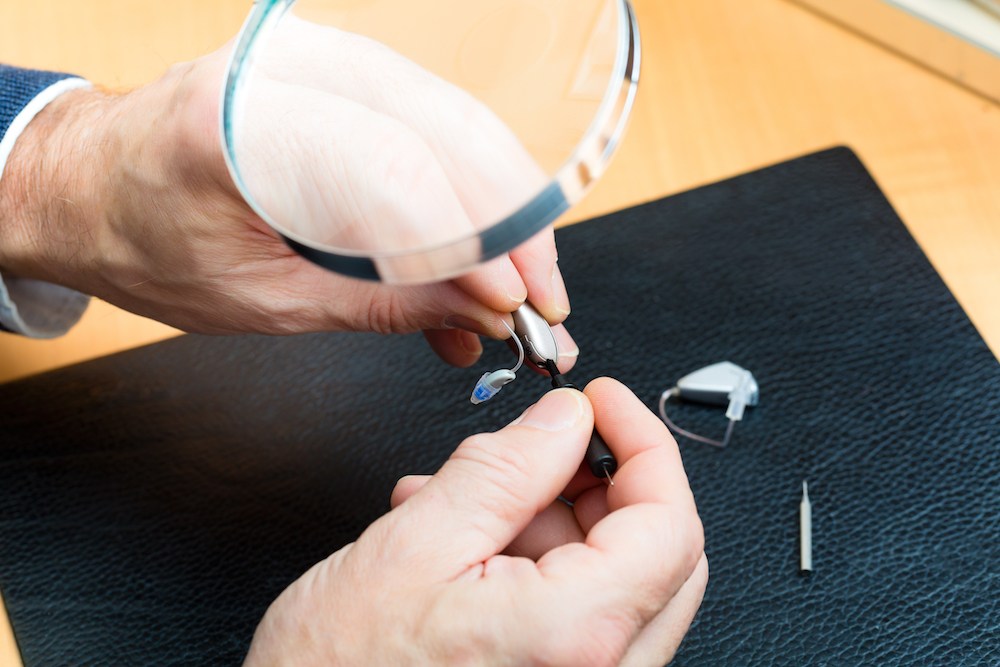Measuring hearing loss is more complex than it may at first seem. You can probably hear certain things clearly at lower volumes but not others. You might confuse particular letters like “S” or “B”, but hear other letters perfectly fine at whatever volume. It will become more apparent why you have inconsistencies with your hearing when you learn how to interpret your hearing test. Because merely turning up the volume isn’t enough.
How do I read the results of my audiogram?
Hearing professionals will be able to get a read on the state of your hearing by utilizing this type of hearing test. It would be great if it looked as simple as a scale from one to ten, but sadly, that isn’t the case.
Rather, it’s printed on a graph, and that’s why many individuals find it challenging. But you too can understand a hearing test if you’re aware of what you’re looking at.
Reading volume on an audiogram
On the left side of the graph is the volume in Decibels (dB) from 0 (silent) to around 120 (thunder). This number will identify how loud a sound needs to be for you to be capable of hearing it. Higher numbers signify that in order for you to hear it, you will need louder sound.
A loss of volume between 26 dB and 45 dB points to mild hearing loss. You’re dealing with moderate hearing loss if your hearing starts at 45-65 dB. Hearing loss is severe if your hearing begins at 66-85 dB. Profound hearing loss means that you’re unable to hear until the volume reaches 90 dB or more, which is louder than a lawnmower.
The frequency section of your hearing test
You hear other things besides volume also. You hear sound at different frequencies, commonly known as pitches in music. Frequencies allow you to distinguish between types of sounds, and this includes the letters of the alphabet.
On the lower section of the graph, you’ll usually find frequencies that a human ear can detect, going from a low frequency of 125 (deeper than a bullfrog) to a high frequency of 8000 (higher than a cricket).
We will test how well you’re able to hear frequencies in between and can then diagram them on the chart.
So, for example, if you’re dealing with high-frequency hearing loss, in order for you to hear a high-frequency sound it might have to be at least 60 dB (which is about the volume of a raised, but not yelling, voice). The chart will plot the volumes that the various frequencies will have to reach before you can hear them.
Why tracking both volume and frequency is so essential
So in real life, what could the results of this test mean for you? High-frequency hearing loss, which is a very common form of loss would make it harder to hear or understand:
- Women and children who tend to have higher-pitched voices
- Music
- Beeps, dings, and timers
- Birds
- Whispers, even if hearing volume is good
- “F”, “H”, “S”
Certain specific frequencies might be more difficult for someone who has high frequency hearing loss to hear, even in the higher frequency range.
Inside of the inner ear little stereocilia (hair-like cells) shake in response to sound waves. If the cells that detect a specific frequency become damaged and ultimately die, you lose your ability to hear that frequency at lower volumes. If all of the cells that pick up that frequency are damaged, then you completely lose your ability to hear that frequency even at higher volumes.
This type of hearing loss can make some communications with loved ones really aggravating. You might have difficulty only hearing some frequencies, but your family members may assume they have to yell to be heard at all. And higher frequency sounds, such as your sister speaking to you, often get drowned out by background noise for individuals with this type of hearing loss.
Hearing solutions can be individualized by a hearing professional by using a hearing test
When we can understand which frequencies you cannot hear well or at all, we can program a hearing aid to meet each ear’s unique hearing profile. In contemporary digital hearing aids, if a frequency enters the hearing aid’s microphone, the hearing aid immediately knows whether you can hear that frequency. The hearing aid can be fine tuned to boost whatever frequency you’re having difficulty hearing. Or it can utilize its frequency compression feature to change the frequency to one you can hear better. They also have features that can make processing background sound simpler.
Modern hearing aids are programmed to address your specific hearing requirements rather than just turning up the volume on all frequencies, which creates a smoother hearing experience.
Schedule an appointment for a hearing exam today if you think you might be dealing with hearing loss. We can help.




